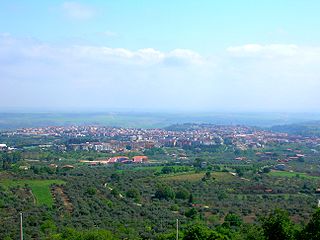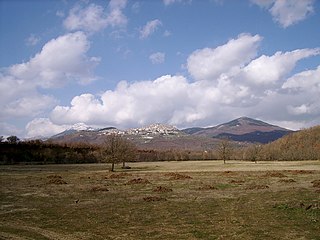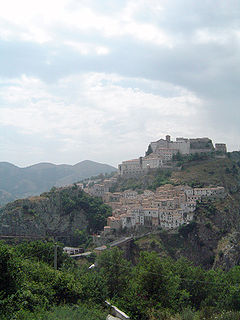
Laurenzana castle (Italian : Castello di Laurenzana) is a former 12-13th-century castle, now in dilapidated state, standing in a rocky outcrop above the town of Laurenzana in the Basilicata region of Italy. [1]

Italian is a Romance language of the Indo-European language family. Italian, together with Sardinian, is by most measures the closest language to Vulgar Latin of the Romance languages. Italian is an official language in Italy, Switzerland, San Marino and Vatican City. It has an official minority status in western Istria. It formerly had official status in Albania, Malta, Monaco, Montenegro (Kotor) and Greece, and is generally understood in Corsica and Savoie. It also used to be an official language in the former Italian East Africa and Italian North Africa, where it plays a significant role in various sectors. Italian is also spoken by large expatriate communities in the Americas and Australia. In spite of not existing any Italian community in their respective national territories and of not being spoken at any level, Italian is included de jure, but not de facto, between the recognized minority languages of Bosnia-Herzegovina and Romania. Many speakers of Italian are native bilinguals of both standardized Italian and other regional languages.

Laurenzana is a town and comune in the province of Potenza, in the region of Basilicata. It rises on a spur between the torre Camastro and the wood surrounding the Serrapotamo valley.

Basilicata, also known by its ancient name Lucania, is a region in Southern Italy, bordering on Campania to the west, Apulia (Puglia) to the north and east, and Calabria to the south. It also has two coastlines: a 30-km stretch on the Tyrrhenian Sea between Campania and Calabria, and a longer coastline along the Gulf of Taranto between Calabria and Apulia. The region can be thought of as the "instep" of Italy, with Calabria functioning as the "toe" and Apulia the "heel". The region covers about 10,000 km2 (3,900 sq mi) and in 2010 had a population slightly under 600,000. The regional capital is Potenza. The region is divided into two provinces: Potenza and Matera.

















